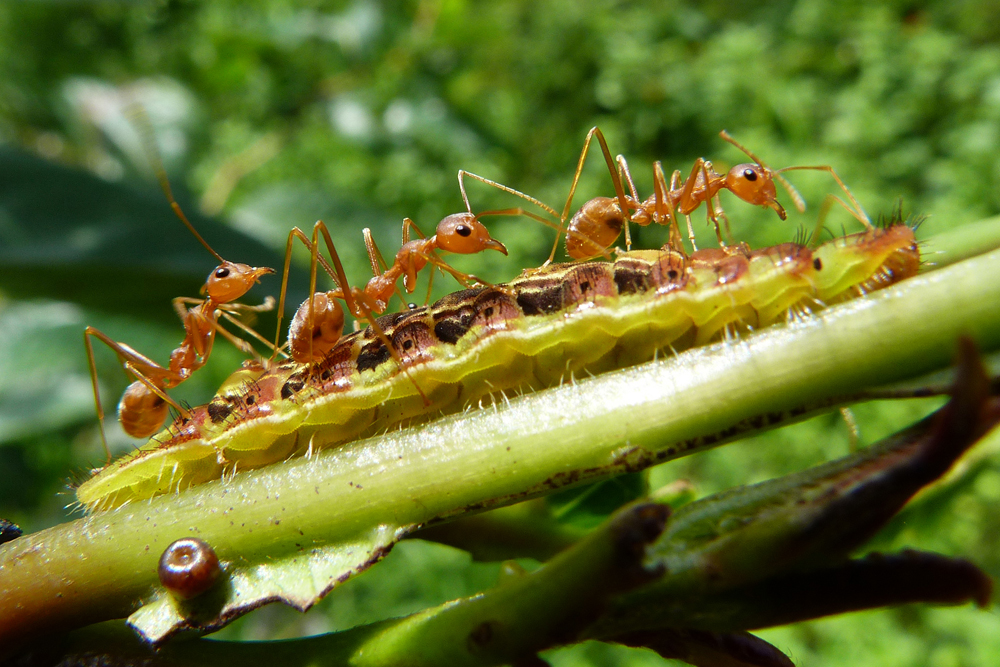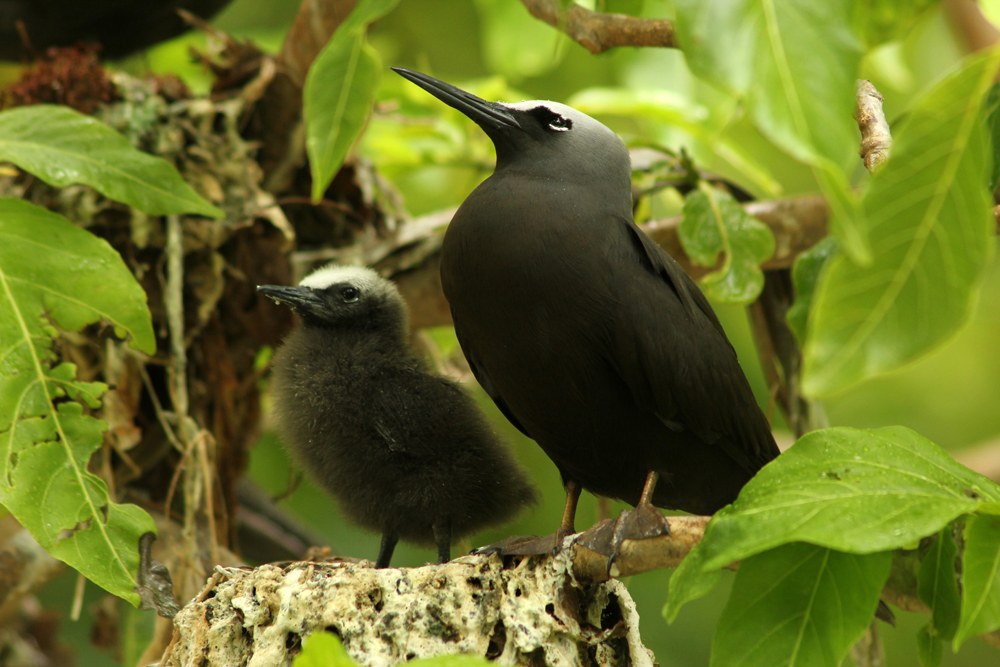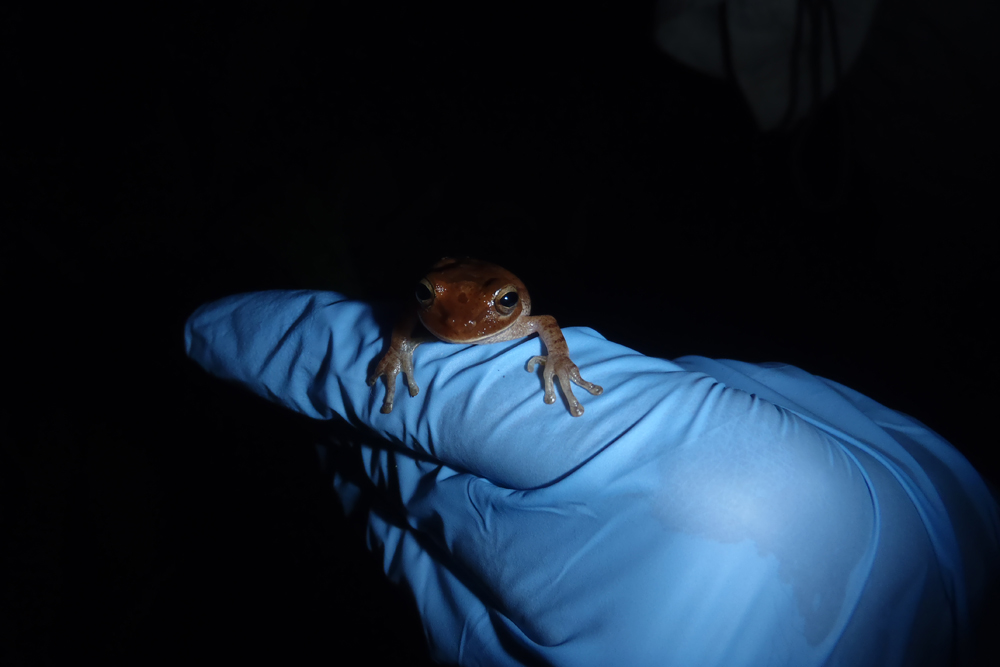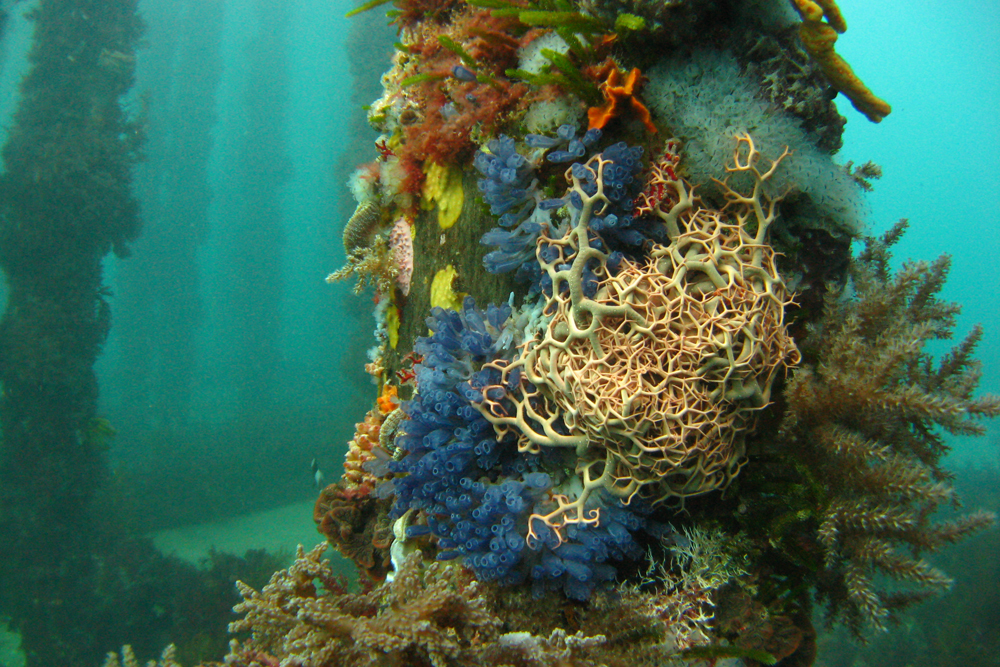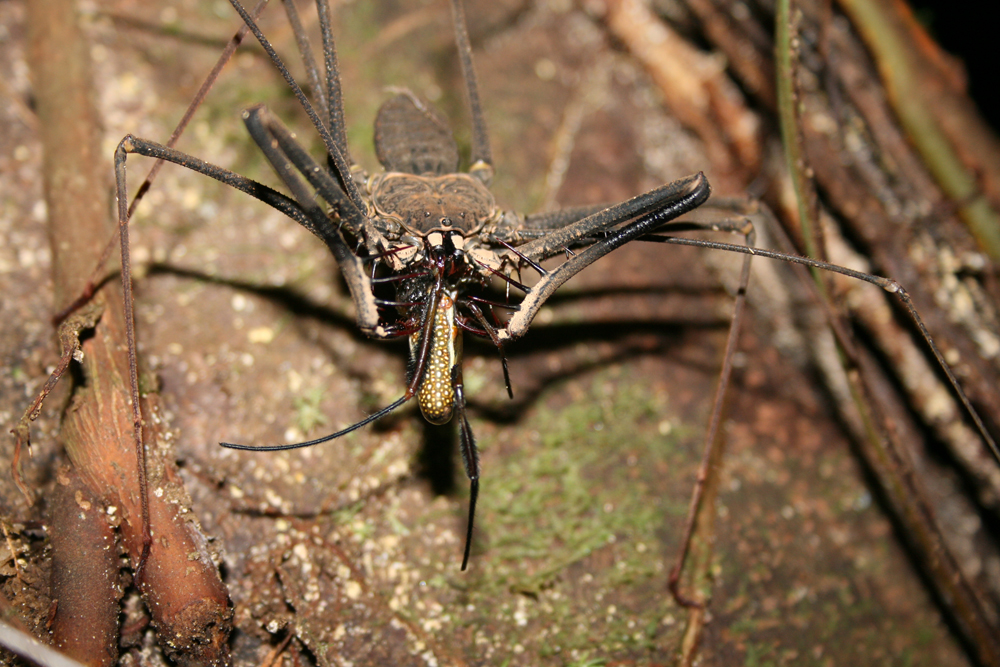Image Gallery: Amazing Photos by Ecologists
The winning photos in the third annual BioMed Central (BMC) Ecology Image Competition were recently announced online. The competition was fierce, with researchers from around the world submitting their best snapshots of nature at work (and at play). From curious baboons to garbage-picking storks, here are some of the best ecology photos of 2015: [Read full story about the ecology photo contest]
Hanging around for refreshments
The overall winner of the BMC Ecology Photo contest depicts a Palestinian sunbird sneaking a snack in Saudi Arabia. The bird you see here is a female, and has a long tongue that she used to suck nectar from flowers. Male sunbirds look much different than females with their distinctive blue coloring. (Credit: Mohamed Shebl)
Struggling for survival
In Guwahati, India, Greater Adjutant storks join their human counterparts in searching for valuable items at the local garbage heap. This photo, which was a runner-up in the competition, highlights the plight of the world's most endangered stork species. (Credit: Dhritiman Das)
On patrol
A carpenter ant sucks nectar from the leaf of a Coccoloba cereifera, a small shrub endemic to Cipó National Park in southeast Brazil. The ant gets its supper and the plant gets a break from the herbivores that nibble its leaves when the ant isn't around. The depiction of this symbiotic relationship was also a runner-up in the BMC photo contest. (Credit: Daniel Wisbech Carstensen)
Get the world’s most fascinating discoveries delivered straight to your inbox.
Snack attack
This might look like a photo of two juvenile baboons having a cuddle, but note the food item stuffed in the forward-facing baboon's mouth. The snack-less baboon seems to be assessing whether its friend has plans to share the meal. This photo won the Editor's pick award. (Credit: Catherine Markham)
Sniffing out love
The Lampyridaebeetle uses its giant antennae to sniff out a mate in central Chile. This good-looking insect won first prize in the Behavioral and Physiological Ecology category of the competition. (Credit: Bernardo Segura)
Chowing Down
This photo won out in the Community, Population and Macroecology category. Thezebra munching on grass in South Africa demonstrates how well certain animals respond to dynamic ecosystems. The zebra's diet is constantly changing, depending on the availability of different grasses in its habitat. (Credit: Julia Spaet)
A desert view
The Landscape Ecology and Ecosystems category celebrates majesty of the land. This scene, from the Sonoran desert in North America, shows just how lush a desert can be, winning it first place in the category. (Credit: Daniel Winkler)
Diversity large and small
The diversity of short grain rice is highlighted in this image, which gained the winning spot in the Conservation Ecology and Biodiversity Research category for the BMC contest. (Credit: Pritesh S. Roy)
Mapping territory
In the Theoretical Ecology and Models category, an image that combined GPS tracking data from a wild Californian condor with an image of a soaring condor took first prize. (Credit: James K. Sheppard)
Making a comeback
Twenty years of conservation efforts have finally paid off for the lesser long-nosed bat (Leptonycteris yerbabuena), whose numbers are once again increasing after years spent on the decline and on the endangered species list. This pregnant bat is flying to join hundreds of thousands of her compatriots to give birth in a "maternity cave" in Sonora, Mexico. This photo (and all the photos that follow) was "highly commended" by the contest organizers. (Credit: Alma Rosa Moreno Pérez)
An uncommon sight
Also receiving highly commended marks were these water lilies, which offer an interesting contrast to baobab trees in Madagascar. The child in the photo is collecting fallen baobab fruits from the water. (Credit: Kathryn M. Everson)
Unlikely allies
This photo shows a group of Weaver ants atop a caterpillar, but despite how it may look, the ants aren't hurting the caterpillar — they're actually protecting it. The caterpillar belongs to the family Lycaenidae and secretes a sugary substance that ants just love. In exchange for the treat, the ants' presence keeps predatory birds at bay. (Credit: Vineeth Kumar K)
Playtime
These Asiatic black bears were photographed as they played with one another in Pakistan. (Credit: Kainaat William)
Bathtime
In Kenya, two unlikely tub-mates — a hippo and a water buffalo — cool off in a deep puddle. The researcher said it was the first time in a decade's worth of fieldwork that she had seen these two creatures (both of which have reputations for being short-tempered) come in such close proximity of one another. (Credit: Graeme Shannon)
A beautiful trap
The more it moved around, the more the ant in this photo became entangled in the tentacles of a carnivorous plant in Japan's Sarobetsu mire. (Credit: Harisoa Rakotonoely)
Danger lurks
While a paddy field worker goes about his business in Central Java, Indonesia, this oriental rat snake (Ptyas mucosa) hangs out nearby. Oriental rat snakes feed on frogs and rodents and don't pose a threat to humans. (Credit: Mark Auliya)
Busy bee
A stingless bee pollinates flowers in Malaysia, where colony collapse disorder has hit hard, resulting in far fewer pollinators than in years past. (Credit: Mohd Masri bin Saranum)
Like parent, like child
A Noddy tern chick and parent guard their nest on Heron Island in Great Barrier Reef, Australia. (Credit: Michelle Achlatis)
Fast food
This South African long-tongue fly catches its meals mid-flight. The fly is the only pollinatorfor more than 20 species of long-tubed flowers.(Credit: Michael Whitehead)
Frog in peril
This image shows a cross-banded tree frog in Nicaragua, one of many species threatened by a fungal infection known as Chytridiomycosis, which is linked to increased human activity in amphibians' native habitats. (Credit: Mark Spangler)
Secret garden
Known as the "secret gardens" of South Australia, this image shows a fragile basket star (Astroboa ernae) sharing a pylon with a colony of blue ascidians (Clavelina molluccensis), sponges, brown and red algae, as well as other species. (Credit: Daniel Gorman)
Fish and fry
The female Mozambique tilapia incubates her eggs inside her mouth, a process known as mouth brooding. Fertilized eggs develop into what's known as "yolk sac fry," which become free-swimming creatures in five to eight days. When the yolk is absorbed, the fishes stop seeking refuge in mommy's mouth. (Credit: Andre P. Seale)
Dinnertime
An Ecuadorian amblypygi (a type of arachnid) feeds on a giant golden silk orb-weaving spider. (Credit: Kenneth J. Chapin)
Dangerous snack
This greater bamboo lemur (Prolemur simus) munches on something that would kill most other animals. It prefers cyanide-containing Madagascar giant bamboo (Cathariostachys madagascariensis), and scientists still aren’t sure what prevents the lemur from being sickened by this poisonous snack. (Credit: Peggy Boone)
Follow Elizabeth Palermo @techEpalermo. Follow Live Science @livescience, Facebook & Google+.













